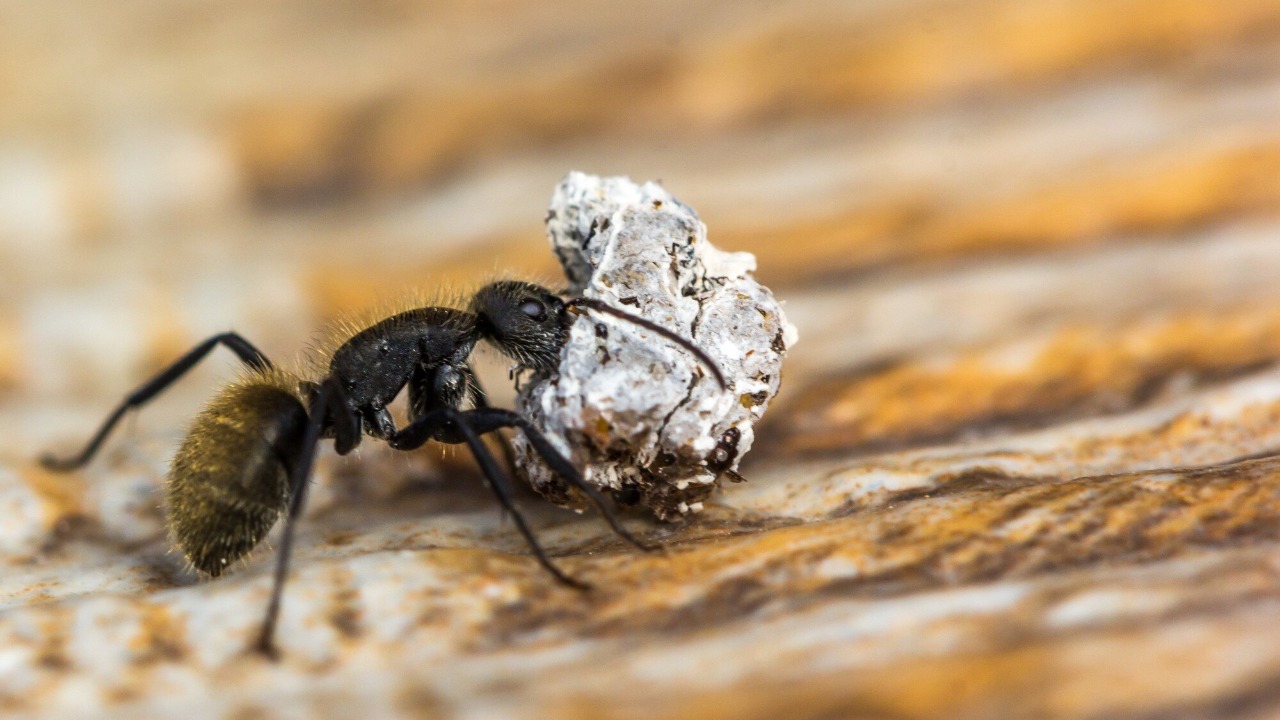
Recent observations have unveiled a fascinating phenomenon: ants, much like humans, adapt their behavior to maintain distance during disease outbreaks within their colonies. This form of “social distancing” was first highlighted in a 2021 study from the University of Bristol, which showed infected ants isolating themselves to prevent disease spread. This behavior, mirroring human responses to pandemics, offers valuable insights into natural disease management strategies. Further analysis in 2025 has underscored these behaviors as a survival mechanism in ant societies facing pandemics.
Ants’ Behavioral Changes During Infections
During disease outbreaks, healthy ants have been observed to increase their distance from infected nestmates. This behavior was first noted in controlled experiments conducted in 2021, where ants were seen to socially distance during simulated outbreaks. This distancing is not random but appears to be a calculated response to chemical signals, with infected ants reducing interactions to limit pathogen transmission within the colony.
Quantitative observations have further highlighted this behavior, with ants maintaining a separation of several body lengths from sick individuals. This distancing, while seemingly minor, can significantly curb the growth of an epidemic within the colony, demonstrating the effectiveness of this natural disease management strategy.
Mechanisms of Social Distancing in Ant Colonies
Ants detect illness in their peers through pheromones, a form of chemical communication. These pheromones trigger a response in healthy ants, leading to self-isolation by infected individuals. This was a key finding in the University of Bristol’s 2021 study, which highlighted the role of chemical signals in prompting isolation.
Ants also adjust their foraging behavior during high-risk periods, avoiding crowded paths to minimize contact. Furthermore, the spatial layout of ant colonies facilitates natural distancing without disrupting overall function. This suggests that nest architecture plays a significant role in disease management within ant colonies.
Lessons from Ants for Human Pandemic Strategies
There are striking parallels between ant isolation tactics and human lockdown measures during pandemics. A report from 2025 explored what ants can teach humans about managing a pandemic, drawing attention to these similarities. Ants’ decentralized decision-making, for instance, could inspire scalable public health models that do not rely on a central authority.
Efficiency metrics also offer valuable insights. Ants have been observed to reduce transmission rates by up to 50% through distancing, a strategy that could be applicable to crowd control in urban settings. This demonstrates the potential of learning from ants’ natural disease management strategies to improve human responses to pandemics.
Social Distancing Across the Animal Kingdom
Social distancing is not exclusive to ants. Various species have been observed to practice similar behaviors to avoid disease. For instance, bees and termites exhibit similar avoidance patterns during outbreaks, suggesting that this behavior may be widespread among social insects.
From an evolutionary perspective, social distancing appears to confer significant advantages. By preserving group survival in the face of pathogens, distancing behaviors can ensure the continuity of social species, highlighting the importance of these strategies in natural disease management.
Recent Insights into Ant Pandemic Responses
Recent findings from 2025 have provided further insights into ant pandemic responses. Real-world colony observations have confirmed that ants ‘social distance’ during a pandemic. Environmental factors, such as climate stressors, have been found to amplify the need for distancing in ant populations.
Moreover, distancing has been linked to faster recovery from epidemics, suggesting long-term benefits for colony health. These findings underscore the importance of social distancing as a survival mechanism in ant societies facing pandemics.
Comparative Behaviors in Other Animals
Ants are not the only animals that practice social distancing when sick. Vampire bats, for instance, have been observed to avoid roost sharing when they get sick. This behavior contrasts with ants’ spatial avoidance, as bats rely more on grooming cessation.
These cross-species comparisons can provide valuable insights into innate immunity and behavioral adaptations to illness. By studying these behaviors, we can gain a deeper understanding of natural disease management strategies, potentially informing our own responses to pandemics.